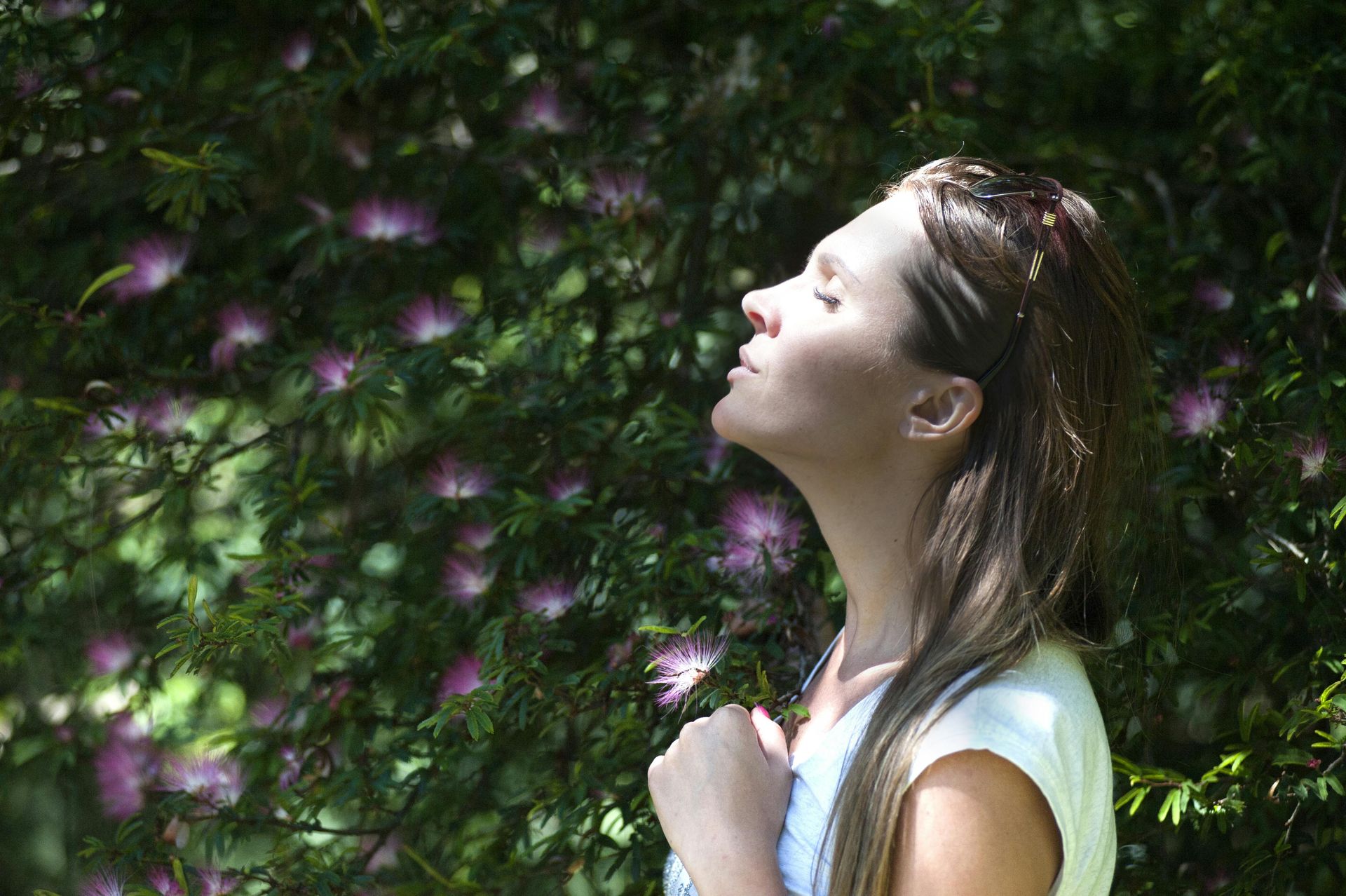As the days shorten, temperatures drop, and sunlight becomes more fleeting, many of us notice shifts in mood, energy, and motivation. Sometimes these shifts are relatively mild—what people often call the “winter blues.” Other times, they deepen into Seasonal Affective Disorder (SAD), a form of depression that recurs in specific seasons (usually fall/winter) and significantly impacts daily functioning. Our post from December 2024 — Understanding Depression and Seasonal Affective Disorder lays out what SAD is and how to recognize it.
This guide builds on that foundation, offering you a seasonal toolbox: early warning signs, simple routines, options like light therapy, and ways to build structure so winter doesn’t feel like a slow descent but a manageable season with grace and resilience.
What’s the difference: Winter blues vs. SAD
| Feature | Winter Blues | SAD |
|---|---|---|
| Onset | Gradual, often just feeling more sluggish, less motivated | More pronounced: symptoms recur annually, often in late fall/winter, substantially affect functioning |
| Duration & severity | Mild, shorter duration; may lift with sunshine or warmer weather | Lasts many weeks/months; can impair work, relationships, self-care, mood regulation |
| Symptoms overlap | Low energy, some withdrawal, mild sadness | All of the above, plus oversleeping or disrupted sleep, changes in appetite (often cravings or weight gain), feelings of hopelessness, difficulty concentrating |
Knowing where you fall on this spectrum helps in choosing the right level of support.
Early Warning Signs to Watch
It’s helpful to catch the slide early—before deeper symptoms take root. Watch for:
- Increased fatigue despite enough rest
- Sleeping more than usual or struggling to wake up
- Craving more carbohydrates or noticing your weight creeping up
- Withdrawal from social plans or favorite activities
- Lower tolerance for stress; more irritability or mood swings
- Trouble concentrating or feeling foggy
- Feeling hopeless, “just waiting for spring” rather than engaging in life
If several of these persist for more than a week or two, especially as fall turns to winter, consider reaching out for additional support.
Building a Simple Routine: Structure as an Ally
Structure doesn’t rigidly schedule every minute; it gives a framework so you have anchors through darker, colder days.
Consistent Wake and Sleep Times
- Wake up at (or near) the same time every day—even weekends.
- Evening wind-down routine: dim lights, limit screen time, calming activities (reading, baths, light stretching).
Morning Light Exposure
- As soon as possible after waking, get natural light (walk outside, eat breakfast by a bright window).
- If natural light is limited, use light therapy (more on this below).
Movement / Physical Activity Built In
- Not necessarily full workouts every day; simple movement counts: short walks, stretching, maybe some yoga, dancing in your living room.
- Outdoor movement is especially helpful when you can.
Meal / Nutrition Habits
- Aim for balanced meals that include proteins, healthy fats, complex carbs.
- Softer on sugar and refined carbs—these may give quick energy but often lead to crashes.
- Stay hydrated, monitor how foods make you feel.
Social & Mental Health Anchors
- Regular connection: plan check-ins with friends or family.
- Activities/hobbies: continue doing (or start) things you enjoy—even if motivation is low.
- Mindfulness / meditation / journaling to track mood, gratitude, or what is going well.
Limit Overcommitment
- Recognize that energy may be lower.
- Say no when needed.
- Plan rest periods or recovery ahead.
Set Realistic Goals
- One or two small goals per week (eg: go outside 3 days, attend one social event, finish one project).
- Celebrate small wins.
Light Therapy & Other Specific Supports
When routines and self-care aren’t quite enough, here are additional tools:
Light Therapy (Phototherapy)
- A light box mimics natural sunlight, helping to regulate circadian rhythms and improve mood. Typically used in the morning for ~20-30 minutes. Ensure it’s a quality lightbox, and follow professional guidance, especially if you have eye conditions or photosensitivity.
Vitamin D
- Low sunlight means less vitamin D for many people. Testing / supplementation under medical advice can help.
Therapy/Counseling
- Talking with a counselor can help you identify thought patterns, behavioral shifts, anticipatory pessimism about winter, etc. Approaches like CBT tailored for SAD can be quite effective.
Medication (when needed)
- For some, antidepressants or other meds may be needed. That’s a conversation to have with a prescriber in concert with therapy.
Lifestyle Adjustments
- Avoid staying indoors all day; optimize indoor lighting; dress in brighter colors; use sensory supports (textures, smells, decor) that lift mood; plan enjoyable winter rituals.
Putting It All Together: A Seasonal Self-Care Plan Example
Here’s how you might pull together a plan in early fall so you’re ready when winter hits:
Early September / October
- Start tracking your mood in a journal or app; note when energy dips or when you feel more withdrawal.
- Check in with your therapist (or schedule one) about a plan for the coming months.
- Set up your light therapy device; test it out.
- Plan outdoor/indoor activities you’ll look forward to (e.g. nature walks, winter hobbies).
Late October to November
- Begin shifting to earlier bedtimes, earlier mornings to maximize daylight.
- Increase use of light exposure (natural or via the box).
- Solidify social plans, monitor nutrition and sleep more consciously.
Winter (December – February)
- Use your plan daily: light therapy, routine, movement, connection.
- Notice early signs and don’t wait to adjust: maybe lighten your schedule, boost rest, reach out to supports.
- Keep one “bright” project or joyful ritual in your week (holiday crafts, reading, baking, etc.).
Spring & Transition
- As days lengthen, gradually adjust routines again.
- Reflect back: what helped most? What didn’t work? Use that knowledge for next winter.
When to Reach Out for Professional Support
Self-care helps a lot, but sometimes symptoms go beyond what routines and tools can manage. Consider seeking additional help if:
- Symptoms worsen or persist for more than a few weeks (low mood, loss of interest, excessive fatigue).
- You notice thoughts of self-harm or hopelessness.
- Your sleep is severely disrupted (too much or insomnia) and interfering with daily life.
- You’re relying heavily on substances or unhealthy coping.
- You feel isolated and unable to reach out.
At Peck Counseling, our therapists are familiar with SAD and seasonal shifts. We can help you build a plan, explore therapy modalities, and adjust as the seasons change.
Final Thoughts
Winter doesn’t have to mean decline. With awareness, early action, and compassionate routine, you can soften the impact of shorter days and darker nights. Whether you experience the winter blues or full SAD, you aren’t alone—and there are many tools, supports, and choices to help you not just get by but feel more grounded, connected, and emotionally resilient.





